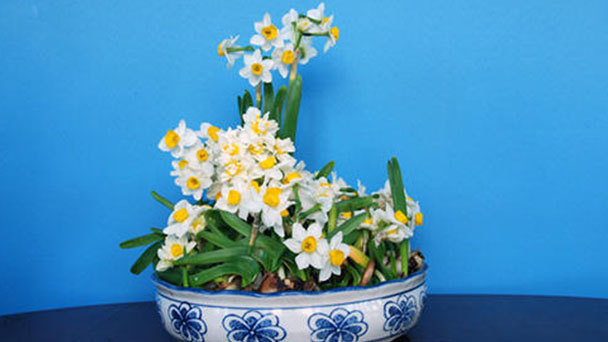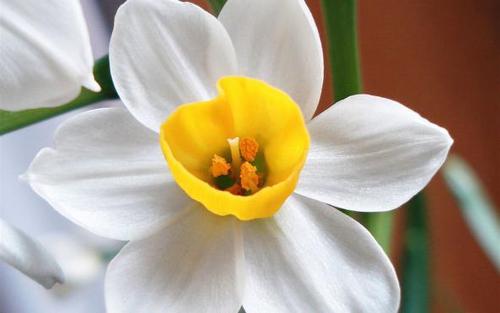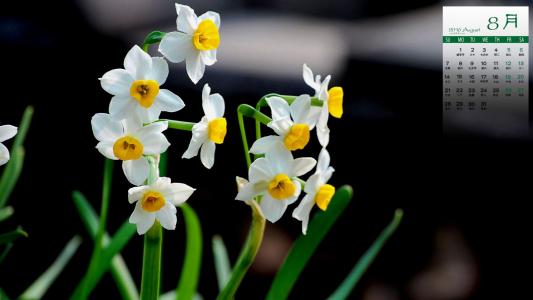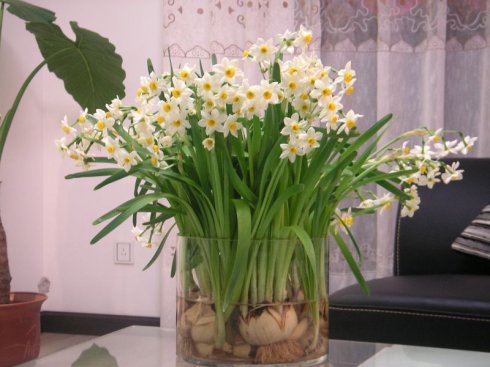Bunch-flowered daffodil profile
Written by Maggie
Mar 16 2021

Bunch-flowered daffodil, scientific name Narcissus tazetta, is a perennial herb of Narcissus in Lichinaceae, originally produced in China. Bunch-flowered daffodil is spread all over the country from Jingzhou. Narcissus tazetta native to central Europe, the Mediterranean coast and North Africa, the Chinese Narcissus is a variety of the polyflorous Narcissus. The flower is white, was a corymb inflorescence, long and narrow leaves, made by its narcissus root has the effect of clearing heat and detoxifying.
Bunch-flowered daffodil picture

Morphological Characteristics of Bunch-flowered daffodil
Bunch-flowered daffodils are bulbs ovoid to broadly ovoid globose, covered with a brown membrane. Leaves are narrow and long, 30 ~ 80cm long, 1.5 ~ 4cm wide, entire margin, white powder on the surface. Scape is drawn from the leaf clump, above the leaf surface; Generally flowering for 4 to 5 leaves of leaf cluster, 1 to 7 flowers per bulb, up to more than 10;Inflorescences (umbels) with 4 to 6 flowers, as many as 10; The flowers are white and fragrant;
The bunch-flowered daffodil petals are usually six oval shaped petals with a light yellow end. The flower has a protective cover like a bowl.
Roots: Bunch-flowered daffodil is a beard root system, growing from the stem and disc, milky white, fleshy, cylindrical, without lateral roots, fragile, easily broken, can not regenerate after broken, epidermis is composed of a single layer of cells, rectangular cross section, cortex is composed of parenchyma cells, oval.For external origin, old roots with airway.
The flowering period of narcissus is January to March.
Bulb
The bulb of Bunch-flowered daffodil is conical or oval. Outside the corm is yellow brown paper film, called corn skin. There are several layers of fleshy, white, clasped corms, axillary buds between each layer, flower buds in the central part, and a corm disc connected at the base.
Leaf
Bunch-flowered daffodil has flat ribbon-like pale green leaves with a powdery face and obtuse apex with parallel veins. Mature leaves ARE 30 -- 50 cm long and 1 -- 5 cm wide. Base milky white sheath like scales, without petiole. Cultivated Bunch-flowered daffodils generally have 5 to 9 leaves per plant, up to 11 leaves.
Flowers
Inflorescence axis of Bunch-flowered daffodil drawn from leaf clusters, green, cylindrical, hollow; The outer surface has obvious concave-convex prisms, the epidermis has waxy powder;It is 20 ~ 45 cm long and 2 ~ 3 mm in diameter.umbel
Bunch-flowered daffodil flowers are fan-shaped at the top of the inflorescence axis, wrapped in a membranous Buddha spathe, generally 3 to 7 flowers (up to 16); Perianth base is connate, tubular, lobes 6, spreading as a disk when open, white; Deputy crown cup - shaped light yellow or bright yellow (called golden marigold silver platform. There are golden calendula golden platforms -- petals are yellow auxiliary crown; Silver cup and silver table -- petals with white crown).Stamens 6, pistil 1, stigma 3 lobed, ovary inferior.
The fruit
Bunch-flowered daffodils are small capsules. Capsule develops from ovary and dehisces from dorsum after ripeness.Chinese narcissus are triploid and do not bear seeds.
Distribution range of Bunch-flowered daffodil
Bunch-flowered daffodil is native to warm coastal regions of eastern Asia; China zhejiang, fujian coastal islands from the birth, but the provinces and regions see the whole cultivation, for ornamental.

Ecological Habits of Bunch-flowered daffodil
Bunch-flowered daffodil for autumn planting bulb type greenhouse flowers, like sufficient sunshine, tenacious vitality, can withstand half shade, not cold.In July and August, deciduous dormant, flower bud differentiation was carried out at the growing point of the dormant bulb, with the physiological characteristics of autumn and winter growth, early spring flowering, and summer dormant.
The growing method of bunch-flowered daffodil
1. Choose balls of Bunch-flowered daffodil carefully, mainly pay attention to the shape, color and compression of the three points.See shape: good quality daffodil bulb, generally large, flat, hard, epidermis wide and longitudinally striped, medium membrane very tight, skin bright color, root plate wide and fat.
2. Choose the right environment for growth. Bunch-flowered daffodils are sunny, warm, require high air humidity, are not hardy to cold, and fear the need for moist, hot sandy soil, and do not collect water during vegetative growth. Bunch-flowered daffodils are different from other perennial herbs. It starts to grow in autumn, flowers in winter, nourishes in spring, and sleeps in summer.
3. Choose the correct method of hydroponics or soil culture to cultivate narcissus.
Soil farming methods are rarely used, that is, most soil algae flower cultivation methods are used for cultivating daffodils. In mid-to-late autumn, plant the large bulbs of Bunch-flowered daffodil in a small potting pot with rich sandy soil, half of which is exposed, and some fine sand should be placed in front of the scales for drainage.
Bunch-flowered daffodil flower language
Respect. The most influential flower species of Bunch-flowered daffodil in England is the wild daffodil, which was favored by many English poets and painters, including the great poet Wordsworth. So the flowery phrase of the wild bunch-flowered daffodil is - homage.

Latest Updated
- Benefits of Bugleweed - 7 Science-backed Health Benefits
- Bugleweed Dangers & Side Effects - Is It Poisonous?
- How to Plant Evergreen Trees - What You Should Know
- When to Plant Evergreens - Grow Guide for Evergreen Trees
- 12 Wonderful Evergreen Shrubs for Your Garden
- 12 Popular Evergreen Plants with Pictures for Beginners
- When And How To Prune A Lilac Bush Like a Pro
- How to Grow & Care for Lilac Vine (Hardenbergia Violacea)
- Japanese Lilac Tree (Syringa Reticulata) Care & Propagation Guide
- Shumard Oak Pros and Cons - What to Know
Popular Articles
- Winter maintenance of Antirrhinum Majus
- How to Grow Terminalia Mantaly Tree
- How to Grow and Care for Crossostephium Chinense
- How to grow Antirrhinum Majus in spring
- Peristeria Elata (Dove Orchid) Profile: Info & Care Guide
- Underwatered Snake Plant (Sansevieria Trifasciata) - Signs And How To Fix
- How to Care for Brazilian Jasmine Plant (Mandevilla Sanderi)
- How to Grow & Care for Graptopetalum Purple Delight in Summer
- Rosa Chinensis (China Rose): Plant Growing & Care Tips
- How to Care for Baby Sun Rose (Aptenia Cordifolia)